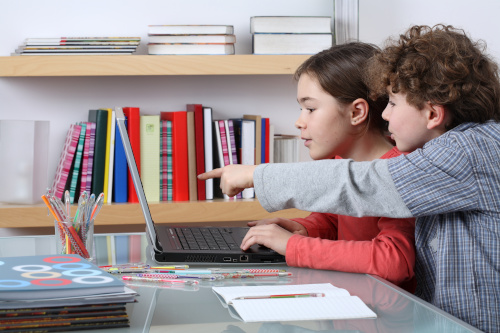Due to the pandemic, many students have fallen behind grade-level expectations. Educators are trying to get students caught up in the most efficient way possible. It may feel like we’re so far behind that we’ll never catch up, but by focusing on teaching students what they’ve missed while continuing on with grade-level material, I believe we can help close the learning gaps created over the past two years.
Despite teachers’ natural inclination to slow down when students are struggling, our district is taking a different approach to literacy. Instead of focusing on remediation, we are diving into acceleration. With the limited district data gathered over the past two years, analysis shows that we can’t slow down in order to get students caught up to grade-level reading. We have to continue on our path forward; otherwise they’ll be catching up until they get their diploma. Here’s how we’re implementing reading acceleration for our students.
Mastery Is Not Bound to Time
Many districts say they’re practicing mastery learning, but they have a traditional grading system where, if a student doesn’t finish their homework, they’ll get a zero. Mastery learning doesn’t align with that process. In a traditional classroom, educators tend to stop and slow down when a student is struggling instead of continuing on. We don’t follow that workflow.
We don’t practice a unit of skills for a set amount of time, test on it, and move on to the next unit without an action plan to support struggling students. If a student doesn’t master skills from unit 1, they’ll continue practicing those skills in unit 2. This is where our collaboration and use of tech tools come in to help. We use Reading Horizons Discovery for all K-3 students, but it’s especially beneficial for students who need extra practice and differentiated instruction on crucial foundational literacy skills. In all literacy domains, students get an opportunity to re-demonstrate their proficiencies after they have received reteaching and corrective opportunities. This approach allows us to differentiate instruction with individual students and run multiple lessons while still focusing on grade-level standards rather than learning loss.
Reading Acceleration in Action
Reading acceleration isn’t about bulldozing over topics and moving on despite struggles students might be facing. It’s about continuing forward down a path, analyzing data, and targeting students individually or in small group, when applicable. Instead of stopping what you’re doing and targeting obstacles in a whole-group setting, educators can utilize data to tailor instruction that meets the needs of students along the path to the next lesson.
For example, in small groups, we facilitate guided reading. This provides differentiated instruction by focusing on a student’s instructional level within a small group. Skills are tailored to students based on their reading level as well as targeted skills, like decoding. In addition to guided reading, we utilize scaffolds and tools to provide students an opportunity to practice grade-level skills while working on independent and small-group rotation work. This may include a 2nd grade student listening to a text instead of reading it or providing more questions to guide students so they can access grade-level content, thus, increasing their understanding.
This is what mastery learning looks like. Teachers are able to manage their time by differentiating instruction based on data from weekly assessments in order to provide students the support they need while also continuing with grade-level standards. This acceleration of learning allows for continuation without ignoring the gaps in learning that exist.
Why This Matters
We want our students to be effective communicators. We want them to have the tools to empower them to influence their world through reading, writing, speaking, and listening. If a 2nd-grader is reading at a kindergarten level because they missed 1st grade due to the pandemic, it is not effective or developmentally appropriate to maintain instruction at a kindergarten level. With quality instruction focused on mastery learning, students can increase their chances of reading at grade-level in a shorter period of time – closing gaps while avoiding creating new gaps in learning.
It takes a lot of hard work for educators to balance acceleration with additional support. It’s juggling between homing in on what students need a recap on and blending in new, grade-level material. Based on their current reading skill proficiencies, individual students need different approaches to help them close gaps. Many of our students simply haven’t been given the opportunity to catch up. As educators, if we can work to close the opportunity gap, we will be that much closer to closing the achievement gap.
At this time, we are starting to see our students become more proficient readers. Though test scores aren’t where we would like them to be, our reading data is greatly improving. For instance, in January 2020, only 7 percent of kindergarten students were reading within the kindergarten proficiency level. However, in January 2022, 51 percent of those same students as 2nd graders were reading within the 2nd grade proficiency band. This is tremendous growth, especially considering these students spent their 18 months in full remote learning during their kindergarten and 1st grade years.
By providing both differentiation and grade-level material, we predict our students will have the necessary skills and strong literacy foundation needed for their future success.
- 4 ways to encourage play in education - April 25, 2024
- CoSN IT Leader Spotlight: Lisa Higgins - April 25, 2024
- It’s time to pay student teachers - April 25, 2024


